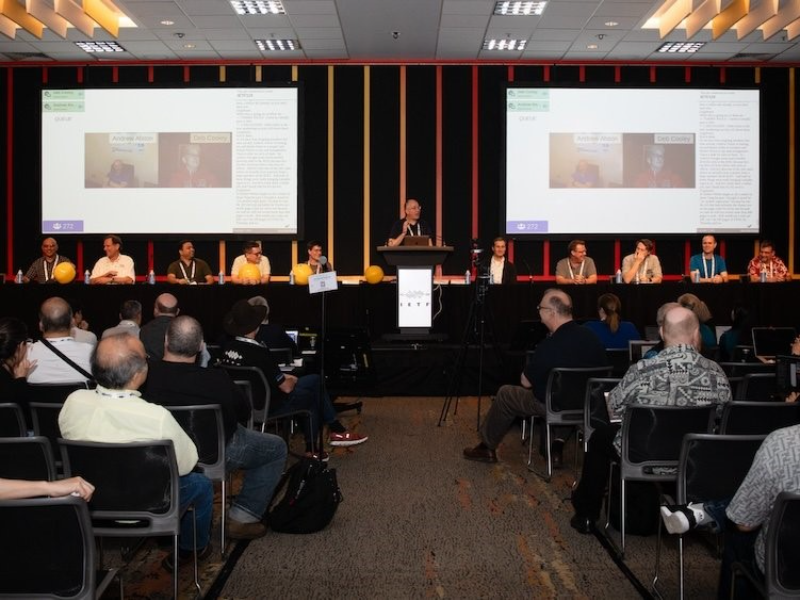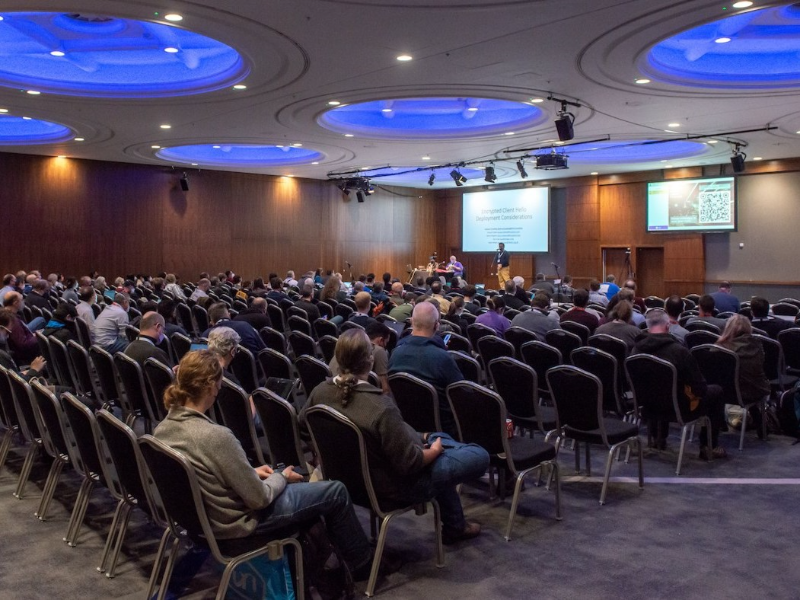- The Internet Architecture Board is a committee of expert volunteers responsible for overseeing the technical and architectural development of the Internet.
- The IAB utilises administrative support groups and technical programs to effectively oversee and advance the technical and architectural development of the Internet.
OUR TAKE
The Internet Architecture Board stands as a cornerstone of the Internet’s technical governance, playing a vital role in ensuring the stability, security, and evolution of the global network. This feature explores the IAB’s history, its current responsibilities, and how it shapes the future of the Internet through its oversight and guidance.
–Vicky Wu, BTW reporter
The Internet Architecture Board (IAB) offers long-term technical guidance for the development of the Internet, ensuring its continued growth and evolution as a platform for global communication and innovation. The IAB does not work from a grand architectural blueprint of the Internet. Instead, its efforts are directed by fundamental design principles – the building blocks of the Internet and their interactions – which define the global, open nature of the Internet.

What is the Internet Architecture Board (IAB)
The Internet Architecture Board (IAB) is a committee of experts tasked with overseeing the technical and architectural development of the Internet. Its primary responsibilities include ensuring the stability, security, and robustness of the Internet’s infrastructure, as well as providing guidance on the development of Internet standards and protocols.
The IAB is a committee of the Internet Engineering Task Force (IETF) and an advisory body of the Internet Society (ISOC). The board consists of appointed and elected members who serve as volunteers, contributing their time and expertise to ensure the Internet remains a reliable and secure platform for global communication.
Also read: Exploring the Internet Governance Forum (IGF): What is it and why does it matter?
Historical development of the IAB
The IAB traces its origins back to the early days of the Internet, when ARPANET was transitioning to the TCP/IP protocol suite. In 1979, Vinton Cerf, then the ARPANET Programme Manager, established the Internet Configuration Control Board (ICCB) to oversee the development of Internet technology standards. Over the years, the ICCB evolved, and in 1983, under the leadership of Barry Leiner, it became known as the Internet Activities Board (IAB).
Throughout the 1980s, the IAB received support from the Federal Research Internet Coordinating Committee (FRICC), an informal group of US Government officials facilitating internetworking. In 1990, FRICC merged into the Federal Networking Council, further solidifying the IAB’s role in the governance of the emerging Internet landscape.
In June 1992, at the INET92 conference in Kobe, Japan, the Internet Society rechristened the Internet Activities Board as the Internet Architecture Board (IAB), marking a new era in its mission to guide the technical and architectural development of the Internet.
Also read: What is the Internet Engineering Task Force (IETF)?
Roles and responsibilities
The roles and responsibilities of the IAB are detailed in RFC 2850, and can be summarised as follows:
IESG confirmation: The IAB confirms the IETF Chair and the Internet Engineering Steering Group (IESG) Area Directors, based on nominations provided by the IETF Nominating Committee.
Architectural oversight: The IAB provides oversight and, when necessary, comments on aspects of the architecture for the protocols and procedures utilised by the Internet. As part of its technical work and architectural oversight role, the IAB organises workshops, initiates and executes technical work programmes, and drafts documents leading to comprehensive technical analyses of matters of interest or offering guidance on protocol design and considerations to the community.
Standards process oversight and appeal: The IAB provides oversight of the process used to create Internet Standards. The IAB acts as an appeal body for complaints regarding the improper execution of the standards process by serving as an appeal body in respect of an IESG standards decision.
IANA: The IAB is responsible for administering the assignment of IETF Protocol parameter values by the IETF Internet Assigned Numbers Authority (IANA). The IAB collaborates with IANA to maintain an administrative support group.
External liaison: The IAB represents the interests of the IETF in liaison relationships with other organisations concerned with standards and other technical and organisational issues pertinent to the worldwide Internet. The IAB Liaison Coordinators serve as the contact points with the IAB for liaison management.
Advice to ISOC: The IAB acts as a source of advice and guidance to the Board of Trustees and Officers of the Internet Society concerning technical, architectural, procedural, and where appropriate, policy matters relating to the Internet and its enabling technologies. The IAB maintains an administrative support group for policy coordination with ISOC.
IRTF chair: The IAB selects the Chair of the Internet Research Task Force (IRTF) for a renewable two-year term.
The IAB opposes policy interventions that would lead to a change, limit the ability for the Internet to evolve, reduce the open access to the Internet, and finally induce a high risk of Internet fragmentation.
IAB Response to the European Commission’s exploratory consultation on “The future of the electronic communications sector and its infrastructure
Mission and objectives
The Internet Architecture Board (IAB) is committed to ensuring the Internet remains a trustworthy, secure, and globally accessible platform, promoting its technical evolution while bridging expertise gaps across diverse fields. Here are its primary objectives:
1. Ensure that the Internet is a reliable medium of communication, providing a robust technical foundation for privacy and security, particularly in the context of widespread surveillance.
2. Establish the technical direction for an Internet that will facilitate the connection of billions more people, support the vision of an Internet of Things (IoT), and allow mobile networks to thrive, while preserving the core capabilities that have underpinned the Internet’s success.
3. Promote the technical evolution of an open Internet without special controls, particularly those that undermine trust in the network.
4. Help connect different fields of expertise when necessary to gain a comprehensive understanding of the factors affecting the evolution of the Internet. For example, technology, policy, and other considerations often interact and influence one another.

Structure and governance
The IAB is governed by a set of rules and procedures outlined in the IAB Charter, which defines the composition, membership, and operations of the IAB. Members of the IAB are appointed by the IETF Nominations Committee (NomCom) and serve three-year terms. The IAB consists of 13 members, 12 of whom are nominated by the IETF and approved by the Board of Trustees of the Internet Society, plus the IETF chair who has voting rights in all official actions except for the approval of IESG members and IESG appeals. Each member serves a term of two years, with the possibility of serving multiple terms. Notably, IAB members serve in their personal capacity and not as representatives of any company, agency, or organization.
Pop quiz:
How long is the term served by each member of the Internet Architecture Board (IAB)?
A. One year
B. Two years
C. Three years
D. Four years
The correct answer is at the bottom of the article.
Structured approaches for effective oversight and technical advancement
To achieve its mission and objectives, the IAB employs structured approaches, including:
Administrative support groups
These groups assist the IAB in addressing its oversight and administrative responsibilities, often by delegating these responsibilities to a specific set of experts holding a specific role. The aim is to have a stable group of experts who continuously support the IAB with their work, often through regular meetings. Administrative programs are typically set up as a permanent support activity for the IAB.
The IAB currently oversees several administrative support groups, including:
- IAB-ISOC Policy Coordination: This group facilitates coordination between the IAB and ISOC on policy-related matters.
- IETF-3GPP: This group coordinates between the IETF and 3rd Generation Partnership Project (3GPP) to ensure interoperability and alignment between Internet standards and mobile communications technologies.
- IETF-IANA: This group manages the relationship between the IETF and the IANA, overseeing the assignment of protocol parameter values.
- IETF-IEEE: This group coordinates between the IETF and the Institute of Electrical and Electronics Engineers (IEEE) to ensure alignment and interoperability between Internet standards and IEEE standards.
- IETF-W3C: This group coordinates between the IETF and the World Wide Web Consortium (W3C) to ensure interoperability and alignment between Internet standards and web standards.
Technical programs
These are established in response to a current technical or architectural concern. Technical programs also tend to convene at IETF meetings (or hold interim meetings) but meetings are more need-based and may be less or more frequent depending on the topic. The main objective of technical programs is to raise awareness and promote discussion of the specific concerns within the community. This may involve holding workshops, supporting the IAB in writing documents, or facilitating group discussions that can impact what the program members do within the community. Technical programs are expected to be closed down once the identified concern is addressed or when sufficient awareness has been built in the broader community.
The IAB currently oversees several technical programs, including:
- Evolvability, Deployability, & Maintainability (EDM): This program focuses on ensuring that the Internet remains adaptable and maintainable over time, considering the long-term sustainability of its protocols and infrastructure.
- Environmental Impacts of Internet Technology (EIMPACT): This program addresses the environmental impact of Internet technology, considering energy efficiency, sustainability, and the carbon footprint associated with Internet infrastructure and usage.
The Internet is a crucial component of our critical infrastructure that wields a significant influence on various aspects of society. It serves as a vital tool for advancing the United Nations’ Sustainable Development Goals (SDGs) and upholding human rights on a global scale.
Dhruv Dhody, IAB member
Challenges and future outlook
The IAB faces a range of challenges and opportunities as the Internet continues to evolve. Some of the key areas of focus for the IAB in the coming years include:
1. Ensuring cybersecurity: The IAB will continue to play a crucial role in addressing cybersecurity threats, promoting best practices, and fostering collaboration between technical communities.
2. Enabling innovation: The IAB will support innovation by preserving the core capabilities that have underpinned the Internet’s success and fostering an environment where new ideas can flourish.
3. Promoting an open internet
- Openness: The IAB will promote the technical evolution of an open Internet without special controls, particularly those that undermine trust in the network.
- Interoperability: The IAB will strive to ensure that the Internet remains a platform for interoperability and global communication.
4. Addressing emerging challenges
- Climate change: The IAB will continue to address the environmental impact of Internet technology, considering energy efficiency and sustainability.
- Ethical considerations: The IAB will increasingly address ethical considerations in the development and deployment of Internet technologies, ensuring that they align with societal values and human rights.
The correct answer is B, Two years.

